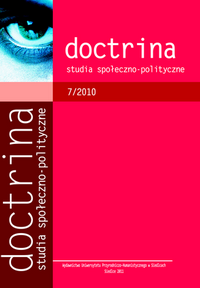Animowane filmy jako narzędzie propagandy politycznej w ZSRR w latach 1941–1942
Abstrakt
Soviet animated cartoons are classical examples of propaganda because they were an effect of purposeful action of the Communist Party of the Soviet Union and its leader – Joseph Vissarionovich Stalin. The character of film productions in 1941–1942 were strongly connected with J.V. Stalin' s emotional speeches given on 6th and 7th November 1941. The main aim of those spiels was to give the audience a feeling of community, no matter who you were and where did you come from. J.V. Stalin put an impact on showing people that the USSR, like The Russian Empire, was unique because of its variety. He stressed that this feature made the Soviet Union stronger that any other country and helped it to defeat enemies. The ideological aspects of Stalin’ s speeches became a base for animated cartoons. Thanks to their convention, films were attractive both for adults and for children. The length of those movies was about 4 minutes what enabled the broadcasters to take control over the audience. The productions differed from each other in many ways. For instance, films from 1941 were aggressive what was connected with complicated military situation in the USSR. When the Soviet Union started to defeat Germany in 1942, propaganda focused more on satirizing an enemy. The element which remains unchanged and was repeated in each cartoon was a connection between particular historical events and the contemporary reality. The purpose of using this element was to give the audience as holistic vision of the situation as it was possible. That is why Soviet animated cartoons in 1941–1942 are described as examples of political propaganda. Their main aims were to inform, manipulate, mobilize and educate the audience.




